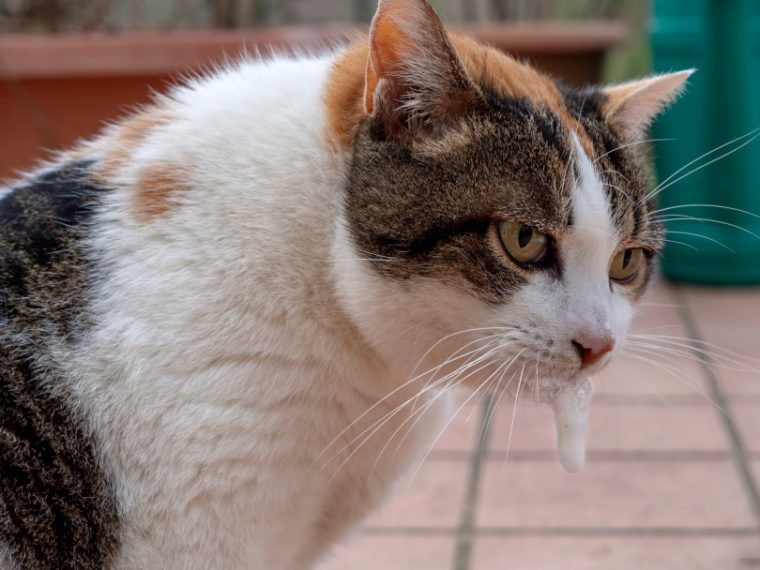
All cats throw up at some point, but some do it more than others. There are many reasons that cats throw up, but it can be particularly alarming to see your cat vomit white foam. What exactly is going on, and is your cat okay?
It depends on why your cat is throwing up in the first place. Before we get into the causes, if your cat seems quite sick and not like themselves, go straight to your vet!
Most of the time, there are benign explanations for cat vomit. However, there’s usually only one reason that cats throw up white foam: they are vomiting on an empty stomach.
We go over the most common circumstances that can lead to cats vomiting and what you can do to best help your kitty.
The 10 Reasons That Cats Throw Up White Foam
1. Hairballs
Probably one of the most common causes for cats throwing up is hairballs. Vomiting these gross, slimy, tubular masses of hair can be relatively common for some cats.
Cats spend upward of 30% of their time grooming themselves, and most of that fur is swallowed and passed through their poop.
Some vets believe that if a cat vomits hairballs often, there might be another underlying health issue, so be sure to speak to your vet if you think your cat throws up hairballs too frequently.
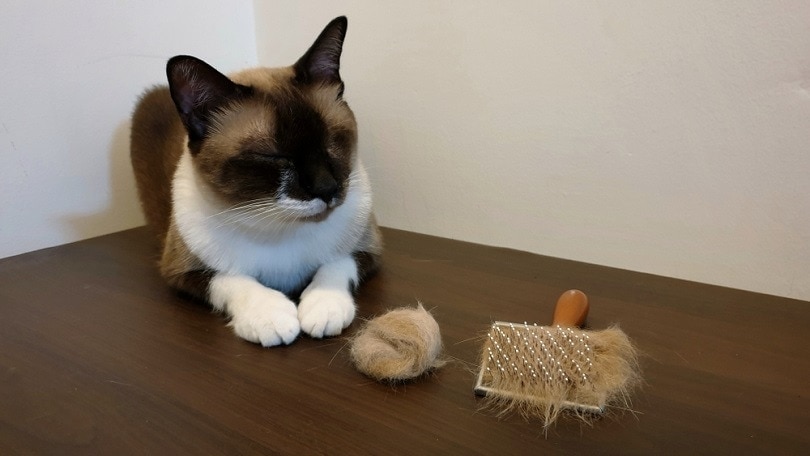
2. Indigestion
Indigestion can occur for several reasons, including (but not limited to) skipping or delaying meals or even eating too fast. The stomach’s gastric juices and acids start to build up, which irritates the stomach and can lead to vomiting. The white or yellow foam is more likely in this scenario because of an empty stomach.
You need to avoid skipping your cat’s meals and consider feeding them small and more frequent meals throughout the day. Keep your cat on a regular schedule to prevent the buildup of stomach acids.
3. Gastritis
Sometimes eating the wrong thing, overeating, or some kind of infection can lead to gastritis. You might find your cat vomiting white foam and possibly bile and blood.
Other symptoms can include lethargy, a general depressed attitude, dehydration, and a lack of appetite. Definitely take your cat to the vet if you suspect gastritis.
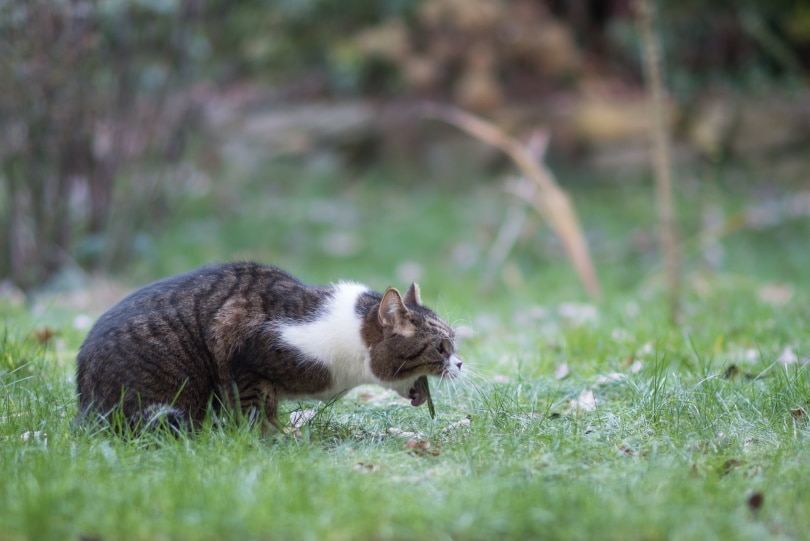
4. Parasites
Certain gastrointestinal parasites can cause vomiting in cats: roundworms, hookworms, and stomach worms, to name a few. It’s usually in conjunction with other stomach issues, like diarrhea, but the symptoms depend on the parasite. You’ll need to take your cat to the vet for diagnosis and treatment.
5. Inflammatory Bowel Disease
Inflammatory bowel disease (IBD) is a common cause of intermittent vomiting in cats. It can cause chronic vomiting in addition to diarrhea, fatigue, and weight loss, among other symptoms.
Food issues can be part of the cause of IBD, as can other factors. Your vet will run tests to diagnose it, and a combination of medication and diet changes are typically part of the treatment process.
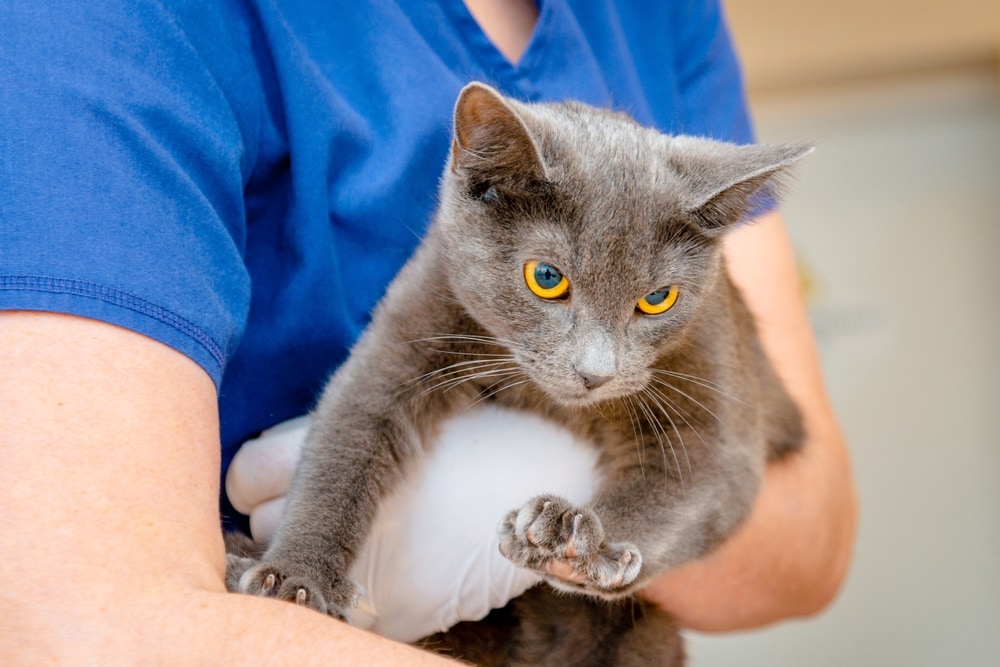
6. Diabetes
While you might not necessarily associate diabetes with vomiting, it is a possible symptom. Other symptoms include weight loss, increased water drinking and urination, and lethargy.
If you notice any of these signs in addition to the vomiting, see your vet as soon as possible. If they are diagnosed with diabetes, treatment may include insulin injections or a diet change, depending on the severity.
7. Pancreatitis
Pancreatitis can occur in conjunction with other conditions, such as diabetes and IBD. Vomiting is a symptom, but you should also look for lack of appetite, lethargy, weight loss, dehydration, jaundice, stomach pain, low body temperature, and fever.
Treatment will involve your vet treating the pancreatitis and any underlying conditions with medication and fluids.
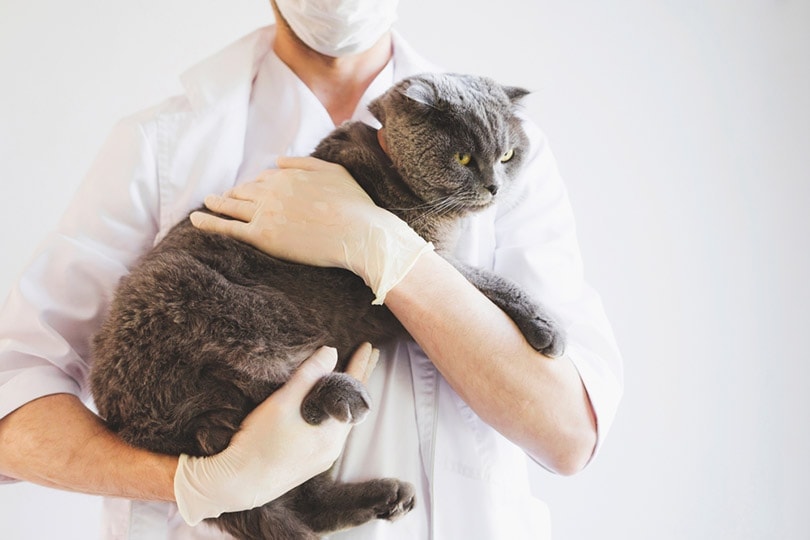
8. Hyperthyroidism
Hyperthyroidism is common in senior cats. Besides vomiting, you’ll also see diarrhea, weight loss, increased urination, and excessive crying. Your vet will need to run bloodwork to check your cat’s thyroid levels, and they will prescribe medications if necessary.
9. Kidney Disease
One disease common in senior cats is kidney disease. Other than vomiting, you’ll also see a lack of appetite, dehydration, weakness, increased drinking, lack of energy, weight loss, excessive urination, and poor coat quality.
It is incurable, but it can be managed through medication, a change of food, and potentially, fluid therapy. Purchasing a cat fountain can sometimes help because you want your cat to drink as much water as possible, and cats might be more likely to drink from running water.

10. Liver Disease
Liver disease can include vomiting, as well as jaundice (yellow skin and eyes), weight loss, loss of appetite, lethargy, and excessive thirst and urination. Like kidney disease, it’s not something that can be cured, but it can be managed through medical therapy and a diet change.
When Should You Be Concerned?
If your cat throws up white foam once and goes back to their usual activity, it’s probably nothing to be worried about. If your cat vomits white or yellow foam, be sure that you are feeding them regularly, as this could indicate they have an upset stomach from being irregularly fed.
If your cat is vomiting over the course of 24 hours, especially if it’s in combination with other symptoms, like diarrhea, loss of appetite, and lethargy, check in with your vet as soon as you can.
They will perform a complete physical examination that may include running diagnostic tests. Tests might include blood work, a urinalysis, a fecal exam, and possibly X-rays and/or an ultrasound. This is all dependent on what your vet suspects might be the problem.
Can You Treat Your Cat at Home?
It’s best if you leave the treatment of vomiting to your vet, as there aren’t any at-home treatments that you can safely provide for your cat. It can even make the problem worse.
Just take note of all the circumstances during the vomiting incident. What and when did your cat eat, and how much? Keep a record of any other symptoms that you observe beyond vomiting. You should provide your vet with this information so they will have a better picture, and can properly treat it.
Final Thoughts
For the most part, if your cat throws up white foam infrequently, it isn’t something you should be too worried about. But if it becomes more frequent, they should be evaluated by a veterinarian.
The white foam is a combination of mucus and fluid that is present in the stomach. This is what you’ll see when your cat vomits on an empty stomach.
So, beyond ensuring that your cat isn’t vomiting due to being fed irregularly, the white foam isn’t what you should be worried about: It’s why your cat is vomiting in the first place.
See Also:
- Why Is My Cat Dry Heaving? Vet-Reviewed Reasons & FAQ
- Why Does My Cat Throw Up After Eating? (9 Potential Causes)
Featured Image Credit: Sarah2, Shutterstock







